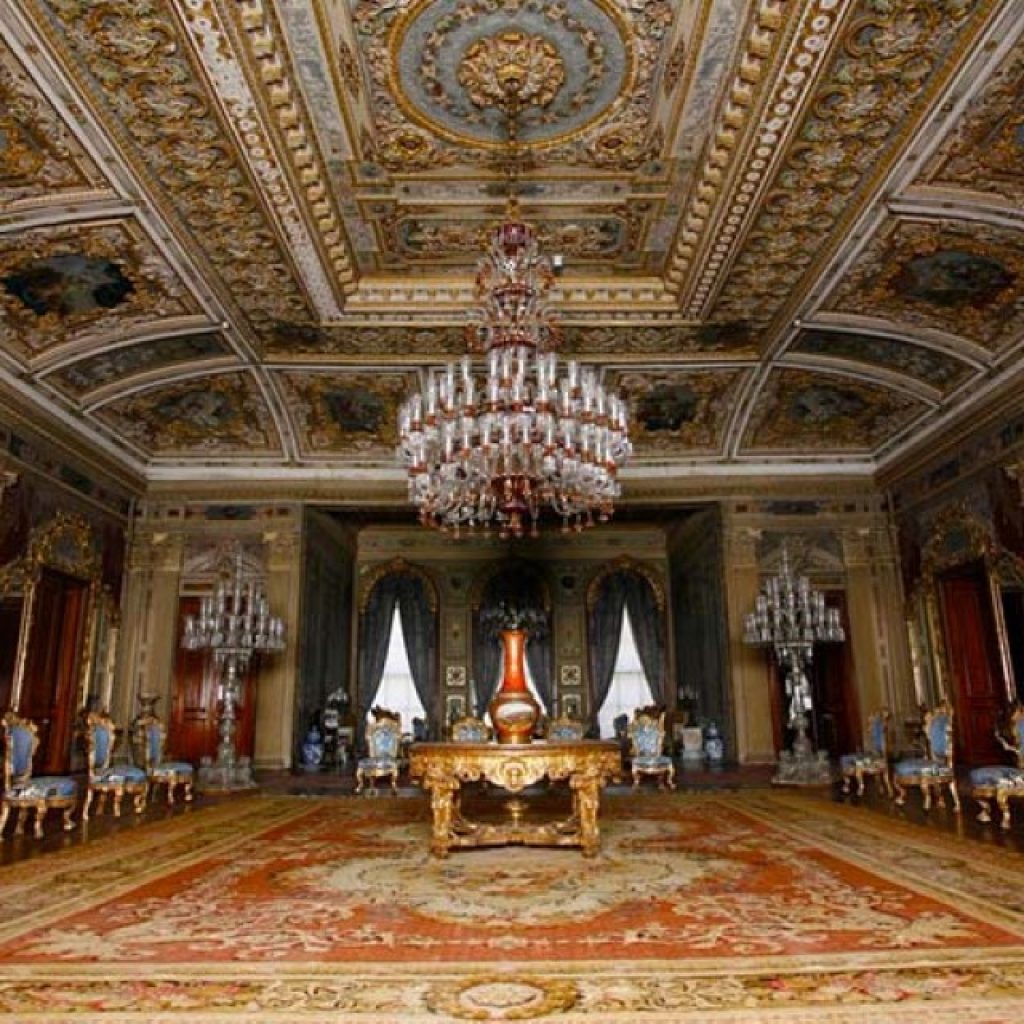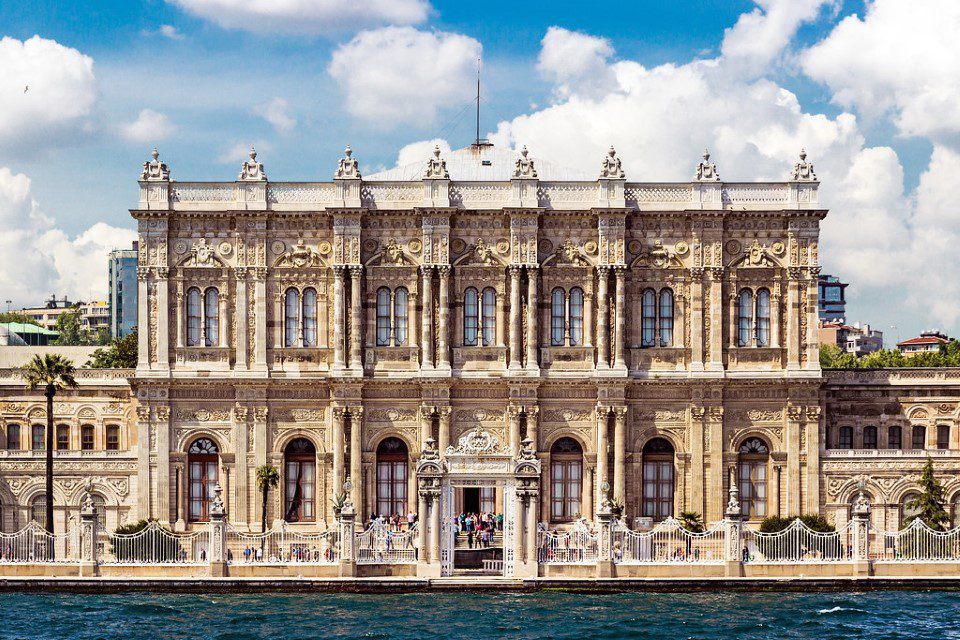The Dolmabahce Palace (Dolmabahçe Sarayı) was commissioned by Sultan Abdul Mecit in 1843 and remained the largest monobloc palace in Turkey. Built to defy the military and financial decline of the Ottoman Empire, the palace is Istanbul’s first European-style palace. The abundant and exquisite design of the gold and crystal-filled palace is a testament to the power and wealth of the Sultanate.

Dolmabahçe Mean is Filled Garden
The Dolmabahçe Palace, situated on what used to be a small bay of the Bosphorus, was built on an imperial garden gradually formed from the 18th century onwards.
Referred to as Dolmabahçe, which translates to “filled garden,” this spot was greatly cherished by the sultans who had numerous mansions (köşk) and pavilions (kasır) built on it during the 18th and 19th centuries.
This collection grew into a complex known as the Beşiktaş Waterfront Palace, which Sultan Abdül Mecit later demolished to make way for the grandeur of the Dolmabahce Palace. The Sultan’s decision to move from the Topkapi Palace to the Dolmabahçe Palace was based on the latter’s ability to offer modern luxuries that the Topkapi Palace lacked.

Inside Of Dolmabahce Palace
Dolmabahçe Palace, located in Turkey, is the largest palace in the country, encompassing an impressive 45,000 square meters (11.1 acres). The palace features 285 offices, 46 halls, six hammams, and 68 toilets. The architects skillfully blended various Baroque, Rococo, and Neoclassical period elements with typical Ottoman architecture to create a unique and impressive synthesis. The palace’s architecture and decor from the Tanzimat era reflect the growing influence of European styles and norms on Ottoman culture and design. From the Bosporus, the palace’s exterior presents a classical European two-wing structure, divided by a sizable avant-corps with two side avant-corps.

Where is Dolmabahce Palace?
Dolmabahçe Palace is essential in Turkish history, as it was originally a bay on the Bosporus where the Ottoman fleet could anchor. During the 18th century, the field was transformed into an imperial garden, which the Ottoman sultans highly appreciated. The name “Dolmabahçe,” which means “filled-in garden” in Turkish, is a testament to its transformation. Over the 18th and 19th centuries, various small summer palaces and wooden pavilions were erected, leading to the creation of the Beşiktaş Waterfront Palace complex. The 110,000 m2 area is situated between the Bosporus on the east and a steep precipice on the west. Following the construction of the 45,000 m2 monoblock Dolmabahçe Palace, there is only a tiny amount of space remaining for a garden complex that is typically associated.

Atatürk and Six Sultans
The Dolmabahçe Palace played a pivotal role in the history of the Ottoman Empire as the residence of six sultans from 1856, when the administrative center of the Empire was moved from Topkapi Palace, until the abolishment of the caliphate in 1924. However, there was a 20-year interval from 1889 to 1909 when Yıldız Palace was used instead.
In addition to its historical significance, the palace also served as a presidential house for Mustafa Kemal Atatürk, the founder of the Turkish Republic, during the summer months. Here, he enacted some of his most important works, including introducing the new alphabet. Atatürk spent his last years in the palace until his passing on November 10, 1938, at 09:05. To commemorate his legacy, all the clocks in the palace are stopped at that exact time, and the room where he passed away is included in one of the palace tours.
Overall, the Dolmabahçe Palace is a testament to Turkey’s rich cultural and historical heritage, attracting visitors from all over the world who come to marvel.
Cheak out our TOURS page to find a good trip for Dolmabahce Palace



0 Comment